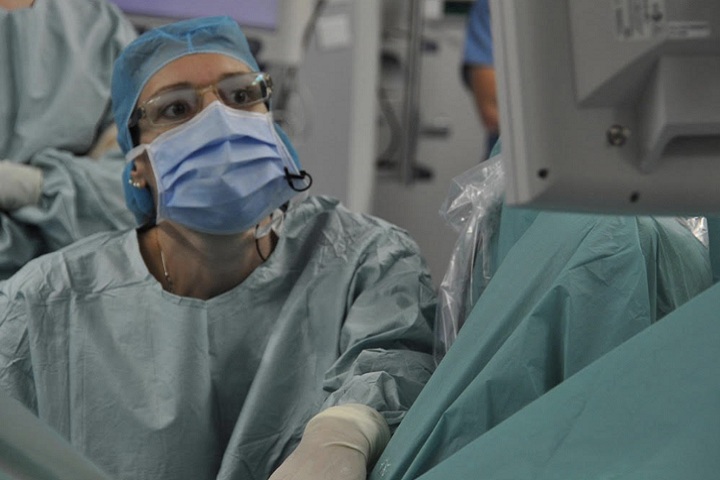
The prostate is a small gland that surrounds the urethra found only in males. It is located below the urinary bladder and in front of the rectum. The prostate produces fluid which, together with sperm cells and fluids from other glands, makes up the semen. The prostate is also responsible for pushing semen out of the urinary tract during ejaculation.
Holmium Laser Enucleation of the Prostate (HoLEP) is a treatment for Benign Prostatic Hyperplasia BPH. HoLEP surgery removes the blockage caused by prostate tissue without any incision being made in the body.
More than often when men grow older the prostate starts to grow. When the prostate gets abnormally large it may cause several health issues. This condition is called BPH. It is the abnormal enlargement of the prostate in older men. The enlargement tightens around the urethra causing difficulty or loss in urination and erectile dysfunction. There are various causes of BPH other than age which include urinary tract infections (UTIs), kidney or bladder stones, scarring of the bladder due to injury or other surgery, inflammation of the prostate (prostatitis), constriction in the urethra (ureteral stricture) and prostate cancer.
There are various symptoms of BPH such as frequent UTIs, difficulty in urination, frequent urination, discomfort, or pain during urination, unable to empty the bladder, blood in urine, continuous dripping of urine from the penis, difficulty starting or stopping urination, and a weak stream of urine even if when applying pressure. It is seen that the severity of the symptom does not depend on the size of the prostate. Some men have mild or no symptoms of large enlargements of the prostate, while some have severe symptoms even in small enlargements of the prostate.
Procedure- While medications and lifestyle changes have proven to be useful in the early stages of BPH, surgery like HoLEP becomes necessary in later and more complicated stages of BPH. The surgeon will review the case and may make some changes in diet before the surgery. The surgeon may also change pre-existing medication and even prescribe other medications. After admission to the hospital specified tests will be conducted. Then the patient will be taken to surgery. Either the patient is administered general anaesthesia where the patient goes into sleep or spinal anaesthesia where the patient does not go into sleep but does not feel any pain. The legs of the patient are spread and positioned on stirrups. A sterile narrow, hollow tube called a cystoscope or urethroscope is inserted through the urethra. Through this tube, a laser, a morcellator, and a vacuum are inserted into the urethra. A lens, connected to a monitor, is also inserted with the rest of the items for the surgeons to see and perform the operation. The laser cuts the excess prostate tissue, peeling it layer by layer. This process is called enucleation. The peels are big in size and therefore cannot pass out the system on their own therefore it is shredded into smaller bits with a shredder-like tool called a morcellator. The bits are pulled out of the urethra through the vacuum. Since the laser is used for enucleation the urinary tract tissues seal simultaneously with little to no loss of blood. Hence, the urinary tract is cleaned of the blockage. The patient is kept under observation for 1- 2 days. The recovery from the procedure is 2-3 weeks. During this period, it is advised to drink excessive fluids, avoid smoking, alcohol consumption, sexual intercourse, strenuous activities, and lifting heavy things. Post-surgery it is common to have frequent urination, blood in urine, mild burning, or discomfort in urination which subdues on its own in a few weeks.
Advantages and Risks- HoLEP is highly effective. It has proven to be better than surgery where incisions had to be made. Since HoLEP causes the least blood loss it is safe for patients that are on blood thinners. It has proven to effectively work on large prostate glands also. This procedure gives the patients shorter hospital stays and faster recovery. In most HoLEP surgery, catheterization is not required. Even the best urology hospital in Kochi, which is one of the best cities for treatment in India, provides the best and most cost effective treatment.
There are a few shortcomings in the procedure. Sometimes the laser or morcellator can injure the urethra or the bladder which can lead to urine leaks, in which case, it becomes necessary to provide a catheter. In some cases, scar tissues form on the site of enucleation which can cause the re-growth of the prostate leading to other procedures. Although HoLEP is a safe procedure if the patients notice bright red urine or blood clots in urine or suffer from fever and pain in the abdomen post recovery the doctor must be consulted immediately.

